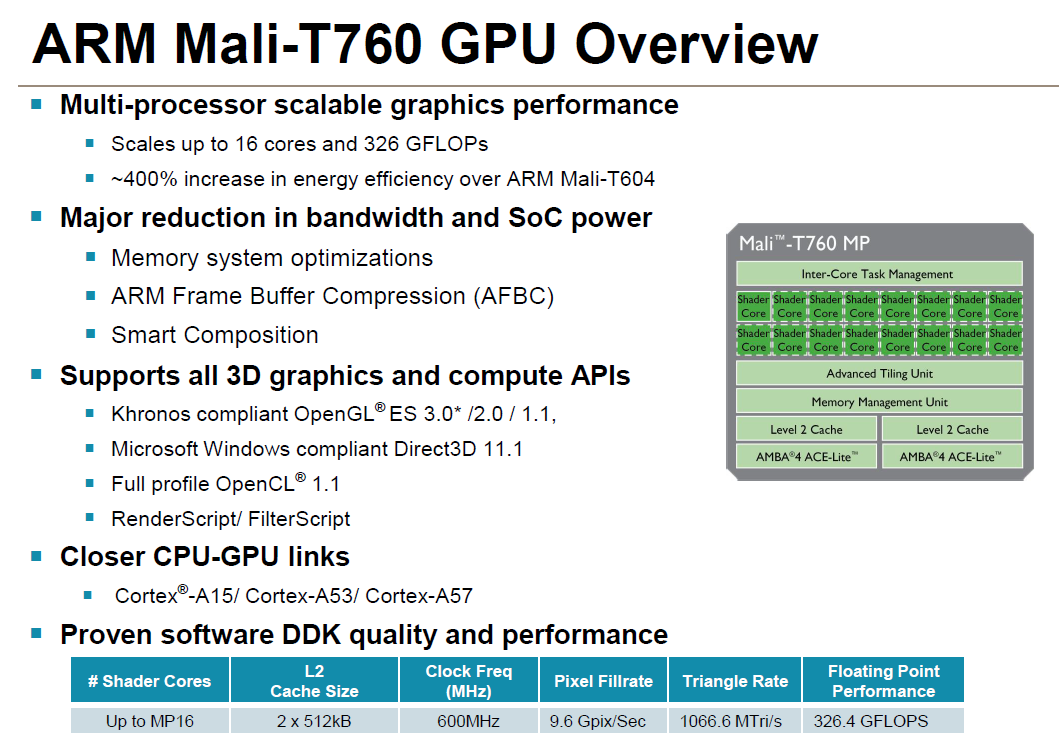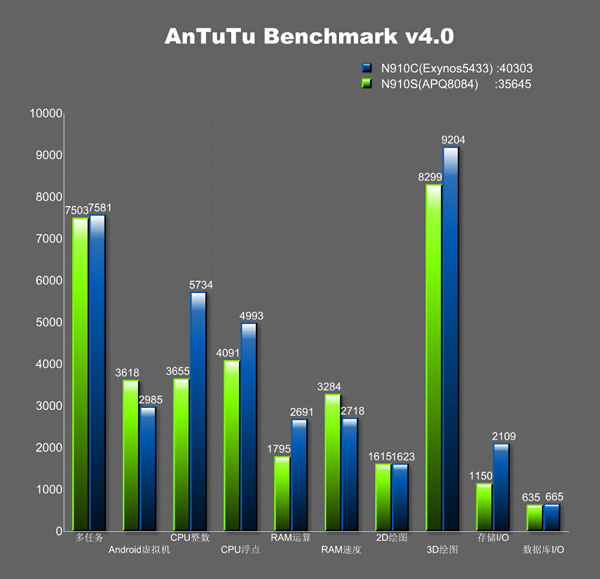International Version Of Galaxy Note 4 To One-Up US Model With 64-Bit Chip
Samsung's Galaxy Note 4 is starting to show up in benchmarks, which are giving us a few more details about its processors and how they perform. The benchmarks show two models: the Samsung N910C, powered by an Exynos 5433 chip, and the N910S, which is powered by the Qualcomm Snapdragon 805.
From the overall AnTuTu score list, we can see that the 64-bit (ARMv8) Exynos 5433 is second in performance only to Nvidia's Tegra K1 chip, and the Snapdragon 805 comes in third place. If we dig deeper into these benchmarks, we see that the difference in CPU performance between the 64-bit Exynos 5433 and the 32-bit Snapdragon 805 is somewhere between 22- and 57 percent, which is quite significant.
The difference is most likely due to the boost in performance Exynos gets from moving to the ARMv8 architecture and also to new CPU cores, while the Krait 450 cores have only received slight improvements over the previous Snapdragons.
The Exynos 5433 uses the big.Little architecture, so it has four 64-bit Cortex A57 cores and four 64-bit Cortex A53 cores, moving up from the 32-bit Cortex A15 and Cortex A7 cores. The Snapdragon 805 uses four 32-bit Krait 450 cores.
When it comes to GPU performance, the Exynos 5433 wins again with its new Mali-T760 GPU topping the (also new) Adreno 420 by about 11 percent. Mali-T760 should in theory reach up to 326 Gflops (rivaling Tegra K1 GPU performance), while Adreno 420 should be more limited (about 225 Gflops), so it's possible that Samsung is restricting the performance of Mali-T760 by using fewer GPU cores, so there's not a huge difference between the two.
Because it is still on the 32-bit architecture, it's also very likely that Samsung decided to stick to the same amount of RAM as last year's Note 3, because the Snapdragon version can't support 4 GB of RAM. So Samsung must have wanted to try to keep both as equal as possible in performance, to the detriment of the Exynos version.
Samsung's relationship with Qualcomm has proven beneficial at times, and so far Samsung hasn't had a reason to stop using Qualcomm chips at the high-end. But if there is one time it needs to do that, it's now. Because of the deal Samsung made with Qualcomm, the copmany now has to ship two versions of the same phone with different processors. One is using a legacy 32-bit ARMv7 instruction set and performs worse because of it; the other uses the brand-new 64-bit ARMv8 ISA and is better off for it.
Get Tom's Hardware's best news and in-depth reviews, straight to your inbox.
Follow us @tomshardware, on Facebook and on Google+.
Lucian Armasu is a Contributing Writer for Tom's Hardware US. He covers software news and the issues surrounding privacy and security.
-
JOSHSKORN This article makes me a sad panda. I'm in the US and I wanted a 64-bit Galaxy Note 4 so badly. :(Reply -
shriganesh Finally the international version (which we have been getting for ages in India) seems better than the US version!!!!Reply -
Mekan This quashes my move from iphone 5 to the Note 4. I have been waiting a long time. Now what to doReply -
pavan_85 It is time now ,to give something back to India! All these years we had your exynos versions which were not so good .Now we really deserve this!Reply



